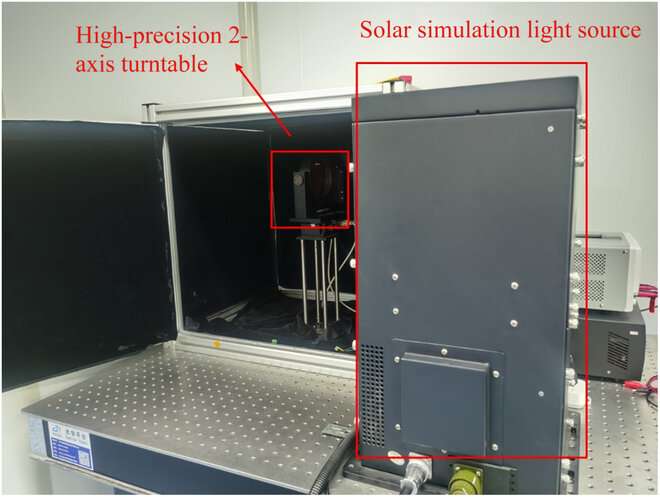Authors first explain the calibration process of sun sensor based on cubic surface fitting. The calibration and testing platform of the sun sensor includes a solar simulation light source, high-precision 2-axis turntable, and servo controller. The outputs of the sun sensor are the incidence λ and azimuth υ, whose theoretical values are obtained from the angle of the turntable and actual values are measured by the sun sensor. There are large errors between the theoretical and actual values, up to 3°.
By substituting the theoretical and actual values into the 3-order surface fitting formula, the cubic surface fitting model are obtained. The output value of the analog sun sensor is corrected by the cubic surface fitting model and the error is effectively reduced. However, there're larger errors close to the edge of FOV (field of view) of the sun sensor.
Then, authors introduce the learning and training of the deep neural network model, which approximates the actual error model and is used for error correction. In the calibration experiment of the analog sun sensor, the deep feedforward neural network is selected to fit the error model, where ReLU (linear rectification function) is selected as the activation function, a full connection as the connection mode between 2 adjacent layers, and the mean square error (MSE) as the loss function. The neural network is trained through gradient descent algorithm and the backpropagation algorithm.
Finally, the effectiveness of the proposed algorithm is verified using experimental data. In the calibration experiment of an analog sun sensor, the training of the network model is divided into two stages: the dataset is generated by the cubic surface fitting model in the initial training stage while the deep network model adopts the measured data for learning in the final training stage.
Additionally, learning data are normalized to the magnitude between 0 and 1 via the max–min method. After network learning in the initial stage, the error between the output of the network model and the estimated value of the cubic surface fitting model is concentrated within 0.02°, indicating that the deep network model at this time can better map the cubic surface fitting model.
In the final training stage of the feedforward neural network model, the calibration error of the incident angle can reach 0.1° (1σ) and 0.25° (3σ), which greatly improves the calibration effect of the cubic surface fitting model. These results shows that the method can effectively eliminate deterministic errors, including spot distortion and assembly errors.
More information: Qinbo Sun et al, Deep Neural Network-Based 4-Quadrant Analog Sun Sensor Calibration, Space: Science & Technology (2023). DOI: 10.34133/space.0024
Provided by Beijing Institute of Technology Press Co.



